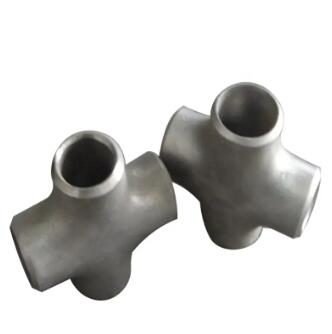Navigating Choices: Key Considerations for Selecting Stainless Steel Tees in Piping Systems
2024-01-06
Introduction:
Selecting the right stainless steel tee for a piping system is a crucial decision that influences the system's efficiency, durability, and overall performance. From material specifications to design considerations, various factors play a pivotal role in making an informed choice. In this blog post, we'll explore the key considerations when selecting a stainless steel tee for a specific piping system or application.
1. Material Compatibility:
- Corrosion Resistance: Identify the nature of the substances being transported and choose a stainless steel grade with appropriate corrosion resistance. For example, austenitic stainless steel is often preferred for corrosive environments.
- Temperature Resistance: Consider the operating temperature of the system. Different stainless steel alloys offer varying levels of resistance to high or low temperatures, ensuring the tee's performance in specific applications.
2. Size and Dimensions:
- Nominal Pipe Size (NPS): Ensure the tee's nominal pipe size matches that of the pipes it will connect, maintaining seamless integration within the system.
- End Connection Type: Evaluate whether a threaded, socket-weld, or butt-weld tee is more suitable for the application, taking into account factors like ease of installation and system requirements.
3. Pressure Rating:
- System Pressure: Assess the maximum operating pressure of the piping system, and select a tee with an appropriate pressure rating to ensure it can withstand the demands of the application without compromising safety.
4. Design and Configuration:
- Equal or Unequal Tee: Consider whether an equal or unequal tee is more suitable for the specific requirements of the piping system. Equal tees have three branches of the same size, while unequal tees have one branch smaller or larger than the others.
- Reducing Tee: In systems where a change in pipe size is necessary, a reducing tee can be a suitable choice.
5. Standards and Certifications:
- Industry Standards: Ensure that the stainless steel tee complies with relevant industry standards such as ASME B16.9, ASME B16.11, or other applicable standards based on the specific requirements of the application.
- Material Certifications: Verify the material certifications provided by the manufacturer to ensure the tee meets the necessary quality and safety standards.
6. Environmental Conditions:
- Chemical Exposure: If the piping system handles corrosive chemicals, select a stainless steel grade that offers superior resistance to the specific chemicals involved.
- Exposure to Elements: Consider the environmental conditions, including exposure to harsh weather, UV radiation, or other external factors that may impact the tee's performance over time.
7. Installation and Maintenance:
- Ease of Installation: Evaluate the installation requirements for the selected tee, considering factors such as welding, threading, or other connection methods.
- Maintenance Considerations: Choose a tee that facilitates easy maintenance, allowing for inspections, repairs, or modifications without significant disruption to the overall system.
Conclusion:
Selecting the right stainless steel tee for a piping system requires a thoughtful evaluation of multiple factors. From material compatibility and size to pressure ratings and environmental considerations, each aspect plays a vital role in ensuring the tee's suitability for a specific application. By carefully considering these key factors, engineers and decision-makers can make informed choices that contribute to the efficiency, reliability, and longevity of the overall piping system. Always consult with industry experts and adhere to applicable standards to make confident decisions in selecting stainless steel tees tailored to the unique needs of each application.



